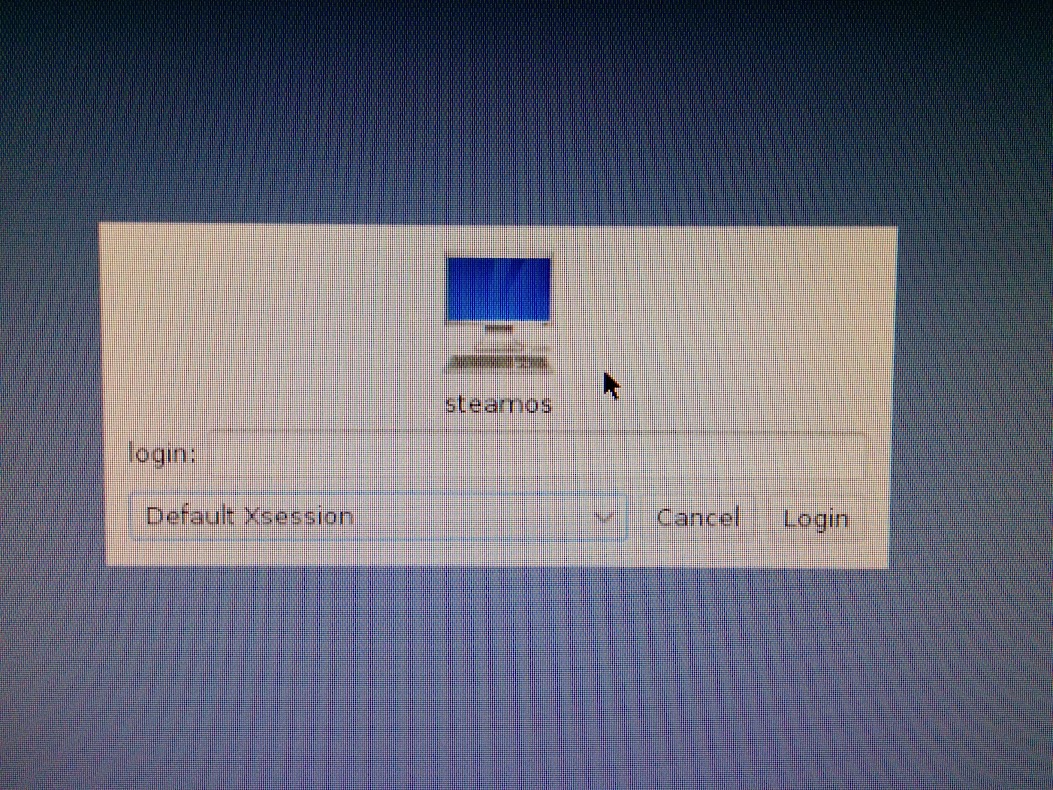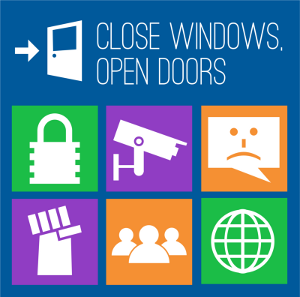Steam OS UEFI Workaround Method 1
Method 1: Grub and SysLinux
This method is provided with great thanks to /u/FrostyCoolSlug of Reddit. Please use extreme caution when trying any of these steps, and I am not responsible for any damage to an existing computer installation.
Disclaimers:
- This configuration will automatically wipe your hard drive and install SteamOS as soon as it’s finished booting. Don’t use on a real computer unless you’re REALLY sure.
- I take no responsibility if you break your machine following these instructions!
- I’m not going to “support” this installation method, it’s very much a “Works for me” situation, YMMV.
These instructions assume your USB pen drive is on D: – Adjust where relevant
Step 1: Download syslinux from Here[1]
Step 2: Download the following two Grub packages* and place them in D:\grub (you may need to create it)
- http://www.l4d3.org/grub-pc_1.99-27+deb7u1+steamos3+bsos1_amd64.deb[2]
- http://www.l4d3.org/grub-pc-bin_1.99-27+deb7u1+steamos3+bsos1_amd64.deb[3]
Note: if for some reason those files are removed, I have uploaded these to my public bitorrent sync directory here:
- Install BitTorrent Sync
- Create a folder in your home directory
- Use the key “BWSL4QC5J7E5HSLNHNR4BSIBA47E6DOZB”, to add the sync folder
Step 2: Extract the SteamOSInstaller.zip file to the root of your USB drive
Step 3: In the root of your USB drive, create a new folder called syslinux
Step 4: From the downloaded syslinux zip file, extract bios/win32 and bios/mbr into D:\syslinux\
Step 4: Open a Command Prompt as Administrator and run MAKE SURE YOU CORRECT THE DRIVE LETTER!:
d:\syslinux\win32\syslinux.exe --install --mbr --active d:
Step 5: Create the file D:\syslinux.cfg and put in the following:
DEFAULT linux TIMEOUT 50 LABEL linux kernel install.amd/vmlinuz append initrd=install.amd/gtk/initrd.gz preseed/file=/cdrom/default.preseed DEBCONF_DEBUG=developer desktop=steamos auto=true priority=critical video=vesa:ywrap,mtrr vga=788 -- quiet
Step 6: Insert the USB drive into the target machine and boot, the installer should run.
Step 7: The installer will FAIL when attempting to install grub, as grub-pc is missing, hold Ctrl+Alt and Hit F2 to drop into a shell, hit Enter to activate it.
Step 8: Type the following and when prompted, do not select any drives, just hit OK and then ‘Yes’:
chroot /target /bin/bash apt-get install grub-common grub2-common dpkg -i /media/cdrom/grub/grub-pc-bin_1.99-27+deb7u1+steamos3+bsos1_amd64.deb dpkg -i /media/cdrom/grub/grub-pc_1.99-27+deb7u1+steamos3+bsos1_amd64.deb
Step 9: Once that’s complete, Hold Ctrl+Alt then hit F5 to return to the UI
Step 10: Hit ‘Continue’ to try grub again, this time it should run properly, say ‘Yes’ to installing to the MBR and the installation will complete.
Step 11: Once installation is complete, follow the rest of the guide Here[4]
* Note that the grub packages are hosted by me (edit: /u/FrostyCoolSlug), they are simply the standard debian builds with the DEBIAN/control file edited to repair dependency problems, and re-versioned to reflect their SteamOS usefulness.
Post installation
- These steps are VERY important, as this installation method is of the type Valve considers a “Custom Installation.”

- After installation is complete, log onto the resulting system (using the Gnome session) with the predefined “steam” account. The username is “desktop” and the password is “desktop”
- Open the “Home” folder and run the file “post_logon.sh” Choose to “Run in Terminal.” This is paramount for big picture mode.
- Enter your sudo password of “desktop”
- Installation will commence and reboot the PC. (you may have to reboot twice)
- Note: if for some reason the reboot fails to find the kernel, hit “return” and choose the 1st default GRUB boot entry. The OS will then load.
- After picking “Gnome” and logging on with the Steam account (password “steam), hit the “Return to Steam” shortcut on the desktop.
VirtualBox Users
To boot from USB, download this[5] , extract plpbt.iso and boot from that, it’ll allow a USB boot. Note that ‘Enable USB 2.0 (EHCI) Controller’ must be DISABLED.
Troubleshooting
Issue 1:
“I am stuck on now is “Run steam, accept the EULA, and let it bootstrap. Logoff the steam account”.”
Solution 1:
run steam from a terminal for it to work, once I was on the login screen, I quit steam then logged out the steam user, then jumpped into desktop and executed the script.
Issue 2:
Ran the script, it rebooted into capturing recovery partition mode then something failed and threw me into (initramfs) prompt. I rebooted into “normal” mode again and after the loading finishes I get stuck with a black screen.”
Solution 2:
This was caused by having two screens attached. Disconnecting one of them helped.
Issue 3:
“I’ve noticed it sometimes seemingly dismounting my USB drive, not entirely sure what causes it, try it again and see if it’s any better… There may be a driver issue otherwise, I’ve only done my testing in VirtualBox.”
Solution 3:
If you Ctrl+alt+F4, the logs might explain why it’s not working.
Issue 4:
My USB drive won’t boot using syslinux 😦
Solution 4:
Thanks to lukaskurucz below, try modifying your boot entry to the following:
DEFAULT linux TIMEOUT 50 LABEL linux KERNEL install.amd/vmlinuz APPEND initrd=install.amd/gtk/initrd.gz preseed/file=/cdrom/default.preseed DEBCONF_DEBUG=developer desktop=steamos auto=true priority=critical video=vesa:ywrap,mtrr vga=788 — quiet
Sources:
Posted on 20131215, in How-To and tagged steam, steam for linux, steamos, SteamOS UEFI workaround. Bookmark the permalink. 7 Comments.



Everytime i try put in this part
dpkg -i /media/cdrom/grub/grub-pc-bin_1.99-27+deb7u1+steamos3+bsos1_amd64.deb
it keep show No such file or directory.
That simply means it cannot locate the file on your CD/DVD device. There a few ways you can find the name of you CDROM. Try a few of these at the prompt. In each case you will see your device under “/dev/cdrom”, “/dev/sr0” or other such names.
Typical paths:
/media/*
/run/media/your_username/
/dev/sr0
/dev/cdrom
1. cd-drive | less
sample output:
CD-ROM drive supports MMC 3
Drive: /dev/cdrom
Vendor : HL-DT-ST
Model : BDDVDRW UH12NS29
Revision : 1.00
2. You could try lsscsi. Install that with “apt-get install lsscsi lsusb”
3. Also somtimes a “running device” can be located under /run. Firist type ‘whoami’ to see your username. Then type ‘ls -la /run/media/mikeyd/PROMETHEUS” where “mikeyd is my username, and PROMETHEUS is the Blu Ray I have in the drdive.
4. Typically* the “/dev/cdrom” location is a “link” to the real location. Type ‘ls -l /dev/cdrom’ and you will see the real device name. In my case, mine is “sr0”. Type ‘find /run -maxdepth 5 -name PROMETHEUS’ or ‘find / -maxdepth 5 -name PROMETHEUS’ to see where my disc example “PROMETHEUS” is. Replace PROMETHEUS with grub other another keyword for the file you are looking for. The depth number of 5 can be increased or decreased. If you use a one word keyword, such as “online,” a file underneath my Blu Ray, be sure to write the command as ‘find /run -maxdepth 8 -name *online*’ , otherwise you will need the full filename.
Hope this helps!
For more see:
http://www.cyberciti.biz/faq/linux-find-out-the-name-of-dvd-cd-rom-writer-blu-ray-device/
I have hard times, getting my USB flash disk to work. I have problem with linux image, which was not found. So I rewrite the syslinux.cfg to this:
DEFAULT linux
TIMEOUT 50
LABEL linux
KERNEL install.amd/vmlinuz
APPEND initrd=install.amd/gtk/initrd.gz preseed/file=/cdrom/default.preseed DEBCONF_DEBUG=developer desktop=steamos auto=true priority=critical video=vesa:ywrap,mtrr vga=788 — quiet
——–
I think that big letters are important to work properly. Maybe it will help somebody.
Thanks for commenting to help others out, I really appreciate it. That should help people who stop by.
Pingback: How To – Don’t Have a UEFI Motherboarf for SteamOS? No Sweat! | The Linux Cauldron
Pingback: SteamOS Ready for Download
Pingback: Wanna try SteamOS, but have a UEFI Motherboard, heres a workaround | Techno FAQ